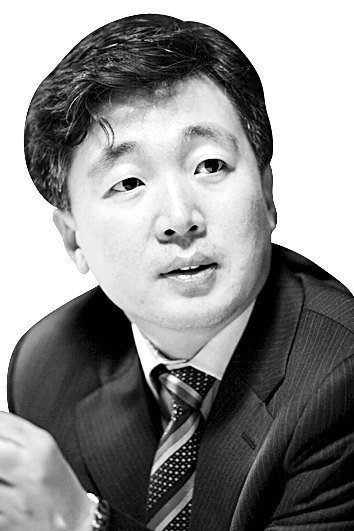Dancing on a tight rope

The author is an editorial writer of the JoongAng Ilbo.
Some professional Go players use a copying strategy. In the initial stage of the game, they put their stones in symmetric positions to their opponent’s. Upon completing the positions on their territory, they stop their corresponding positioning and start to make their own moves. The South Korea-China foreign ministerial meeting in Xiamen, southern China, held over the weekend reminds me of the copycatting in Go.
In the meeting, both sides agreed to expand their foreign ministers’ meeting to a two-plus-two meeting of foreign and defense ministers of South Korea and China and cooperate on high-tech fields such as 5G mobile telecommunication. The remarkable development matches the conclusion of the latest two-plus-two meeting of foreign and defense ministers of South Korea and the United states.
Beijing also requested a foreign ministerial meeting in China timed with the Blue House National Security Advisor’s trip to Washington. The symmetrical plays by China will likely go on for some time. When President Moon Jae-in talks with U.S. President Joe Biden on the phone, that would be a cue for Chinese President Xi Jinping to pick up the phone and arrange a summit with the South Korean president.
The contest between Washington and Beijing is currently at the stage of positioning their territory and building up forces on each front if we compare it to a game of Go. Once each side is well positioned, the real battle starts. If Seoul chooses to walk a tightrope to maintain a balance or sit on the fence too long, it could fall flat on its face. It is utterly naïve for South Korea to think it can make a choice after a winner is determined.
![Korean Foreign Minister Chung Ui-yong, far left, has a meeting with his Chinese counterpart Wang Yi in Xiamen, China, April 3. [YONHAP]](https://koreajoongangdaily.joins.com/data/photo/2021/04/06/8db50e85-a600-44cc-857a-39fabfdf630e.jpg)
Korean Foreign Minister Chung Ui-yong, far left, has a meeting with his Chinese counterpart Wang Yi in Xiamen, China, April 3. [YONHAP]
The conflict between Washington and Beijing no longer concerns just the governments. Samsung Electronics was invited to a White House meeting to discuss cooperation on establishing a new semiconductor supply network. Samsung may see increased business opportunities in the U.S., which is grappling with a shortage of chips for automobiles. But the United States’ demands won’t stop there.
The hegemonic battle between America and China won’t necessarily develop into a military clash, but the high-tech area will become the battle ground which will decide the final winner. Semiconductors stand at the center. Chips have become a strategic commodity that can determine the winner of the hegemonic war.
Keeping to the U.S. as a partner in security alliance and sticking with China for economic cooperation cannot work amid the rapid blending of security and economics. Even before the Sino-U.S. clash, Seoul was running out of time with that dual strategy. Beijing won’t be satisfied with being an economic partner of South Korea. A close economic partnership thanks to the international supply structure has driven their bilateral relationship and benefited the two economies since the normalization of diplomatic ties in 1992.
But China no longer regards South Korea simply as a trade partner. For South Korea, China is still its biggest trade partner. Beijing no longer needs to go after Korean capital or technology. For China, South Korea carries more strategic value for geopolitical and security reasons. As clearly seen in China’s economic retaliation for South Korea’s deployment of the U.S. Thaad antimissile system, South Korea’s dual approach does not work anymore.
Beijing’s goal is to woo Seoul to its side. It ultimately wants South Korea to prioritize China in both security and economic matters. Since it cannot force it now, Beijing demands Seoul keep a maximum neutrality between China and the U.S. Korea National Diplomatic Academy Chancellor Kim Joon-hyung may have indulged Beijing with his controversial remarks that Seoul has been overly obsessed with the decades-old Korea-U.S. alliance. The Moon administration’s decision to walk a tight rope between the U.S. and China may reflect such prescriptions. But the tightrope strategy can be extremely risky as we saw last weekend.










with the Korea JoongAng Daily
To write comments, please log in to one of the accounts.
Standards Board Policy (0/250자)